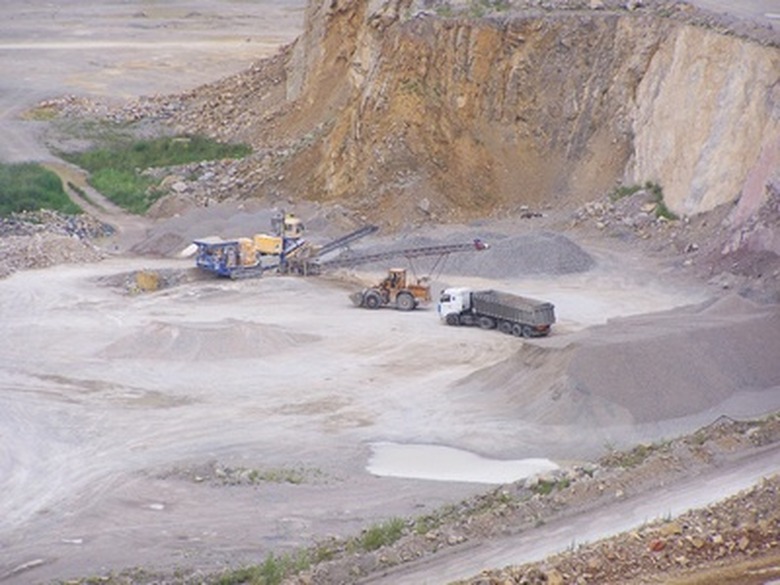How Tantalum Is Mined
Tantalum is a grey, heavy and very hard metal with a melting point of over 3000 degrees Celsius. It is classified as a "refractory" metal, which means it can sustain high temperatures and resist corrosion. It is a good conductor of heat and electricity, which makes it useful in various electronics. Pure tantalum can be drawn into fine wire filament, which is used to evaporate other metals.
Where Tantalum is Found
Where Tantalum is Found
Tantalum is found in hard rock deposits such as granites, carbonites and pegmatites (igneous rock that consists of coarse granite). It is not an abundant metal, and mining it is difficult. There are only a handful of countries that mine it. The demand for tantalum has increased over the past 20 years, especially in the in the computer and electrical sectors. Sites are being identified for future development, and existing sites are being evaluated for expansion.
How Tantalum is Mined
How Tantalum is Mined
Tantalum comes from the processing and refining of tantalite. Tantalite is the common name for any mineral ore containing tantalum. Most tantalum mines are open pit; some are underground. The process of mining tantalum involves blasting, crushing and transporting the resulting ore to begin the process of freeing the tantalum. The ore is then concentrated at or near the mine site, to increase the percentage (by weight) of tantalum oxide and niobium. The material is concentrated through wet gravity techniques, gravity, electrostatic and electromagnetic processes.
How Tantalum is Processed
How Tantalum is Processed
The tantalum concentrate is transported to the processor for chemical processing. The concentrate is then treated with a mixture of hydrofluoric and sulphuric acids at high temperatures. This causes the tantalum and niobium to dissolve as fluorides. Numerous impurities are also dissolved. Other ores, such as silicon, iron, manganese, titanium, zirconium, uranium and thorium, are generally present and processed for other uses. The concentrate is broken down into a slurry. The slurry is filtered and further processed by solvent extraction. Using methyl isobutyl ketone (MIBK), or liquid ion exchange using an amine extractant in keroses, produces highly purified solutions of tantalum and niobium. Finally, this tantalum oxide is reduced with molten sodium to produce tantalum metal.
Uses for Tantalum
Uses for Tantalum
Tantalum is used to make electrolytic conductors, aircraft engines, vacuum furnace parts, nuclear reactors and missile parts. Tantalum is unaffected by body fluids, and is nonirritating, which makes it useful for surgical appliances. It is common in the production of cell phones, personal computers, igniter chips in car air bags, cutting tools, drill bits, teeth for excavators, bullets and heat shields. Because the metal is an electrical conductor, it is useful in many consumer electronics, such as microprocessors for plasma televisions.
Transporting Tantalum
Transporting Tantalum
Tantalum is most often transported by sea in metal drums on pallets. In some remote locations, it is transported by air. Tantalum contains small amounts of uranium and thorium; concerns about requirements for radiation transportation have been raised. Some transporters refuse to carry it because it does not meet the new lowered requirements of 10BQ/gram. Although tantalum is not highly radioactive, it does not meet the lowered requirements.
Cite This Article
MLA
Mundy, Dorothy. "How Tantalum Is Mined" sciencing.com, https://www.sciencing.com/tantalum-mined-6136148/. 24 April 2017.
APA
Mundy, Dorothy. (2017, April 24). How Tantalum Is Mined. sciencing.com. Retrieved from https://www.sciencing.com/tantalum-mined-6136148/
Chicago
Mundy, Dorothy. How Tantalum Is Mined last modified March 24, 2022. https://www.sciencing.com/tantalum-mined-6136148/
